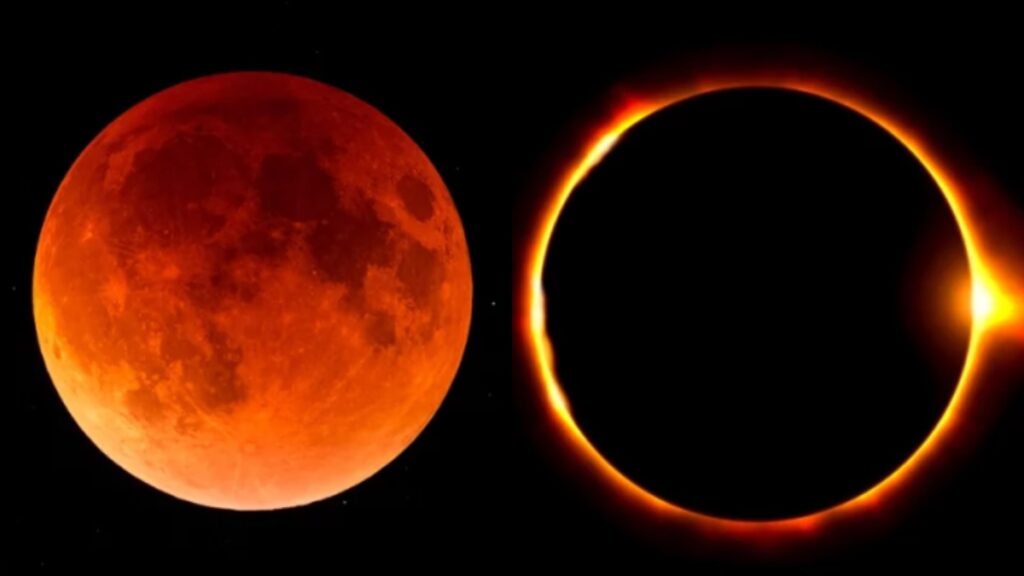The cosmos has a mesmerizing display in store for us, and it’s none other than the Solar Eclipse 2023. As the celestial bodies align, the skies will unveil a breathtaking phenomenon on October 14, 2023.
What is a Solar Eclipse?
A solar eclipse occurs when the Moon passes between the Earth and the Sun, obscuring the Sun partially or completely from our view. This alignment creates a mesmerizing shadow on Earth, casting a spellbinding spectacle for those fortunate enough to witness it.
Types of Solar Eclipses
There are three primary types of solar eclipses: total, partial, and annular. The Solar Eclipse 2023 is eagerly anticipated as a total solar eclipse, where the Moon entirely covers the Sun, casting darkness in its path.
Solar Eclipse 2023: An Overview
This highly anticipated solar eclipse has been the talk of the astronomical community for a long time. It’s an event that promises to captivate the world.
Date and Time of the Solar Eclipse
Mark your calendars for October 14, 2023, as the Solar Eclipse is set to grace the skies. The timing will vary depending on your location, so it’s essential to know the schedule in your region to witness this spectacle.
Viewing the Solar Eclipse Safely
While a solar eclipse is a sight to behold, it’s crucial to emphasize that observing it directly with the naked eye can be harmful. Specialized eclipse glasses or viewers are a must for safe viewing.
Why Are Solar Eclipses Important?
Solar eclipses serve as a reminder of the vastness and complexity of our universe. They hold cultural, historical, and scientific significance, often inspiring curiosity and wonder.
Historical Significance of Solar Eclipses
Throughout history, solar eclipses have been a source of fascination and even fear for many civilizations. They often sparked myths, legends, and scientific discoveries.
How Does a Solar Eclipse Occur?
Understanding the science behind a solar eclipse adds to the appreciation of this celestial event. It’s all about the alignment and geometry of the Earth, Moon, and Sun.
The Path of Totality
The path of totality is the region where the Solar Eclipse is visible in its full glory. Planning a trip to this path promises a once-in-a-lifetime experience.
Preparing for the Solar Eclipse
As the day approaches, it’s essential to prepare adequately. This includes planning your location, ensuring you have the right viewing equipment, and checking the weather forecast.
Observing the Eclipse with Special Glasses
Eclipse glasses or viewers are specially designed to protect your eyes while allowing you to witness the eclipse. These are widely available and a must for safe viewing.
Tips for Photographing the Solar Eclipse
For photography enthusiasts, capturing the solar eclipse can be a thrilling endeavor. Learn how to capture this extraordinary event through the lens of your camera.
Where to Watch the Solar Eclipse 2023
The Solar Eclipse 2023 will be visible in certain parts of the world. Discover the best locations to witness this celestial show.
Conclusion
The Solar Eclipse 2023 on October 14, 2023, is an event of astronomical significance, promising a visual spectacle that connects us with the cosmos. Remember, safety is paramount when viewing the eclipse, and taking precautions enhances the experience.
FAQs
- Can I watch the Solar Eclipse without special glasses?
No, it’s unsafe to observe the eclipse without proper eye protection. Eclipse glasses or viewers are essential.
- How often do total solar eclipses occur?
Total solar eclipses are relatively rare and occur approximately once every 18 months somewhere on Earth.
- What is the best way to photograph the Solar Eclipse?
To photograph the eclipse, you’ll need a solar filter for your camera lens and a tripod to keep the camera steady.
- Where is the best place to watch the Solar Eclipse 2023?
The best places to watch the Solar Eclipse 2023 include parts of North America, Europe, and Africa, along the eclipse’s path of totality.
- Can I use sunglasses to view the Solar Eclipse?
No, regular sunglasses are not safe for eclipse viewing. Only use certified eclipse glasses or viewers for protection.

